Innovative Equipment Engineered to Last
Discover Barreto Manufacturing's 40 years of innovative, durable landscaping equipment, along with expert tips and local highlights for your projects.
Equipment Insight: Mini Skid Steers
Luckily for rental fleet managers, there are many quality options on the market when it comes to adding compact track loaders and mini skid steers to their fleets. We recently partnered with Pro Contractor Rentals to write an article that addresses these three questions about the advantages of new mini skid models:
- What advances are being incorporated into new SSL/CTL models and how are those advances answering customers’ needs?
- What are some of the considerations that rental centers need to think about when contemplating on bringing new SSL/CTL models into their rental fleets?
- What can rental centers do to increase demand or increase ROI with these units?
1. What advances are being incorporated into new SSL/CTL models and how are those advances answering customers’ needs?
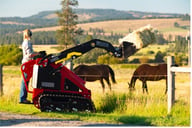
Answer: Advances in the industry have led to greater safety and usability features on skid
steers and mini track loaders. Safety is our number one priority as a manufacturer – the most important thing we can do for our customers is provide a safe, quality piece of equipment that brings many great returns for the equipment’s lifetime.
The Operator Presence Switch is one such essential safety feature on the Barreto 825TKL that automatically senses when the operator steps off the unit and renders the controls inoperable. The sensor, when paired with the intuitive controls and variable high, medium, and low speed selections, maximizes safety and handling for even novice users.
Especially considering novice users, exceptional track design is essential for a customer’s fleet. Unpredictable use in various field conditions affects the performance of many tracked machines, particularly in reverse, and the unique 825TKL track shape employs a hydraulic tensioning system that keeps pressure on the tracks when operating in any direction. This eliminates lost time caused by de-tracking, while articulating rollers absorb impact when traversing over uneven ground.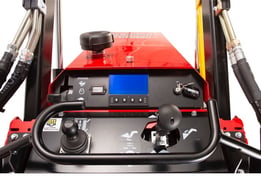
Electronic LCD display and Tip Over Protection are other advanced features that mini skid steer owners come to expect. The electronic display meets the need to quickly check machine health metrics like fuel supply, engine oil, and more. Tip Over Protection furthers the owner’s control over the machine by automatically locking the controls and shutting off fuel supply in the event of a tip over situation. This prevents engine damage and allows the owner to inspect and secure the machine before unlocking with a code.
2. What are some of the considerations that rental centers need to think about when contemplating on bringing new SSL/CTL models into their rental fleets?
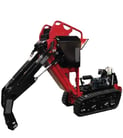
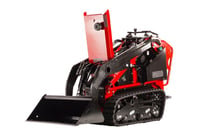
Answer: Top considerations when adding a unit to a fleet are the size and lifting capacity. Safety and user-friendliness are also key. Will the machine steward your customer well throughout various
tasks? Customers respond well to a machine that instills confidence through its ease of operation and simple safety features.
When not out on rental, a machine that is simple to maintain back at the shop will reap the benefits of reduced repair and routine maintenance time. The 825TKL cab-over design provides easy access to complicated in-depth repairs on internal components, and your mechanics might actually enjoy the process.
Durability and existing attachments should also come into consideration – will the machine endure the abuse of rental and fit seamlessly into your existing fleet, or will you have to repair frequently and buy new attachments just to run it?
3. What can rental centers do to increase demand or increase ROI with these units?
Answer: Consider long-term investments. It’s easy to buy a cheap machine that fills a gap, but real ROI comes from the combination of durability, clever engineering, user-friendliness, reduced downtime through easy maintenance, and frequent demand. Further your ROI by taking care of your equipment through consistent maintenance via regular lubrication, cleaning, and checking wear parts that keep your machine in tip-top shape. 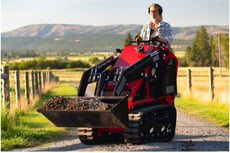
Increase demand by purchasing and training on safe, uncomplicated equipment that is reliable in the field. Customers are uncomfortable with equipment they don’t understand, so invest in novice users through training that supports confidence, and impress advanced users with intelligent, modern equipment that keeps them coming back for more. Link customers to operational videos often provided by manufacturers, as these provide quick-start procedures that help with the overall understanding of the machine
